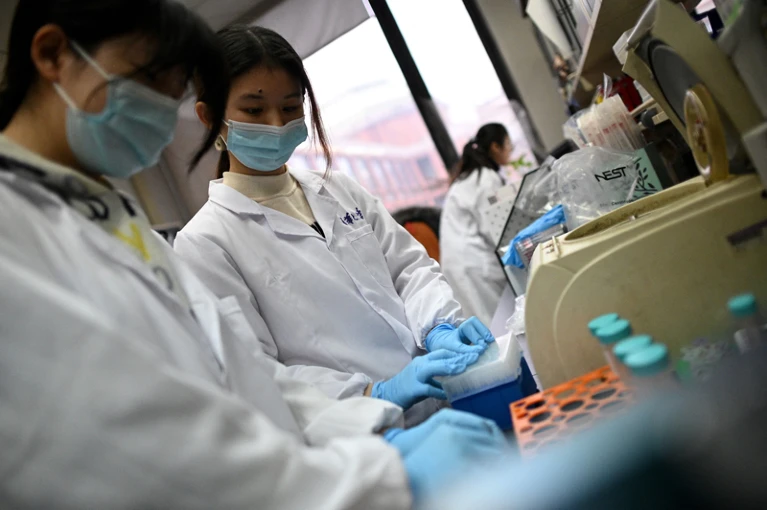by DYANI LEWIS

Young Chinese scientists who got their PhDs overseas and returned to China as part of a state-run talent drive published more papers following their return than their peers who stayed abroad. The productivity bump can be explained by returnees’ access to greater funding and an abundant research workforce, according to the authors of an analysis published in Science1. The findings come as geopolitical competition between the United States and China mounts.
In 2008, China began enticing expatriate scientists and foreign researchers to relocate to China through its Thousand Talents Plan, which aims to make the nation a global leader in science and technology.
Despite its prestige, government agencies in the United States and elsewhere have regarded the programme with suspicion, because of its potential to increase the flow of technical know-how to China. In 2018, the administration of former US president Donald Trump launched the China Initiative, to protect US laboratories and businesses from espionage. And that same year, the Chinese government stopped publicly naming Thousand Talents Plan recipients because of the negative career impact that the association might have.
The latest study focuses on a branch of the programme — the Young Thousand Talents (YTT) Plan — designed to attract early-career researchers to Chinese research posts. The programme offers researchers generous research packages, including an internationally competitive salary and start-up funds: between 2011 and 2017, when records were still publicly available, it offered grants to more than 3,000 researchers.
Researcher calibre
To gauge the programme’s success, the authors examined some 300 young Chinese researchers who had got their PhDs abroad, then received YTT grants between 2012 and 2014 and returned to academic positions in China.
They found that the grant recipients ranked in the top 15% for publication output in the five years before returning to China, when benchmarked against all early-career scientists in the United States. This suggests that the YTT programme was succeeding at attracting high-calibre scientists, the researchers conclude.
But they also found that scientists who rejected offers to participate in the programme, and stayed abroad, ranked even higher — in the top 10% for research productivity in the five years before they might have returned. These researchers were also more likely to have published as a last author on papers — which usually denotes seniority — in leading journals. Public-policy researcher Kathleen Vogel at Arizona State University in Tempe thinks that the main reason for these findings is that it’s hard to persuade top-notch researchers to leave elite institutions, where they already have access to funding and resources.
Productivity boost
Nature for more
